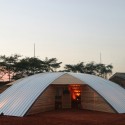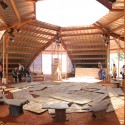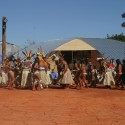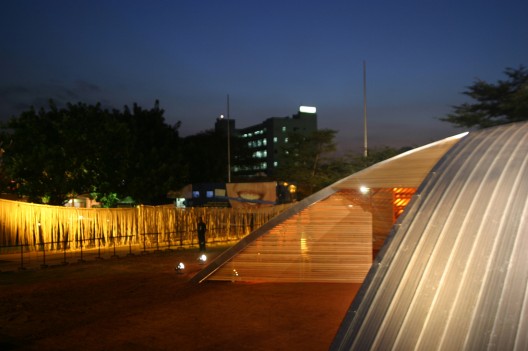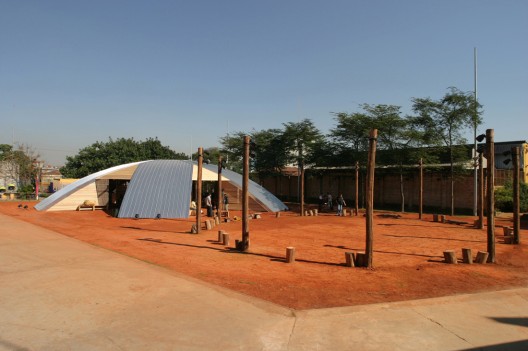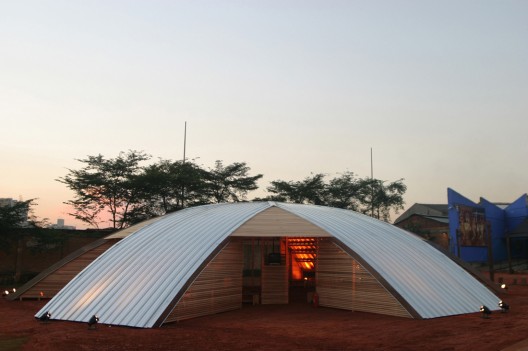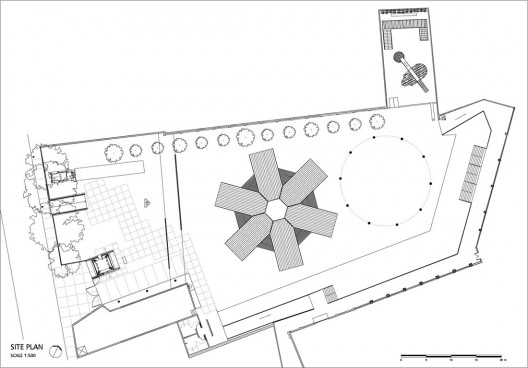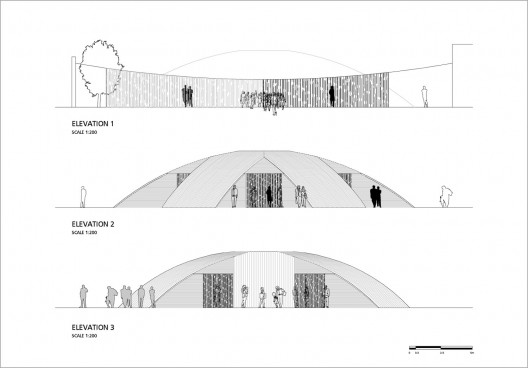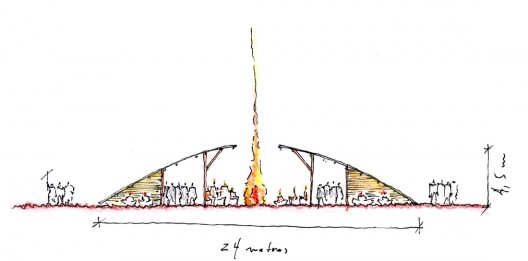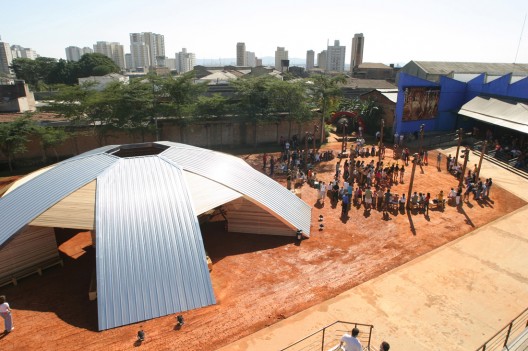
The “Oca” was developed as a temporary pavilion for the event “Resistance and Tradition”, which was part of the World Cultural Forum that took place in São Paulo in 2004. As a center of discussion about Brazil’s indigenous culture, it sheltered many ceremonies and meetings of representatives from the country’s various native communities.
Architect: Königsberger Vannucchi - Jorge Königsberger and Gianfranco Vannucchi
Location: Sao Paulo, Brazil
Project Year: 2004
Client: SESC / World Cultural Forum
Photographs: Gal Oppido
Inspired by the typology of traditional indigenous houses - from which the “Oca” derives its name -, the project references typical elements of the native architecture, such as the zenithal illumination and the high level of transparency of the building. However, it does so in a respectful manner without intending to be a mere literal reproduction of said architecture, through the use of contemporary elements such as galvanized steel boards. Alas, not only its form but also its structural design and building method were also based in the wooden frame of typical indigenous ocas.
The site is divided by two circles that mark the event’s different gathering spaces. The first is represented by the oca, which symbolizes the indigenous house. The other one is a simple earth circle surrounded by wooden totems with the same diameter as the oca, which symbolizes the space for rituals and festivities that occur in the middle of a “taba”, or indigenous village.
- site plan
- plan
- elevations
- sketch
'건 축 | 建築' 카테고리의 다른 글
| Two residences in New York by Gage Clemenceau (0) | 2009.04.16 |
|---|---|
| Contrapunto Bookshop by Lipthay + Cohn + Contenla (0) | 2009.04.16 |
| St-Germain Aqueducts and Sewers by acdf architecture (0) | 2009.04.16 |
| Experimental home in Ijburg by FARO architecten bv (0) | 2009.04.16 |
| Kindergartens by 70ºN Arkitektur (0) | 2009.04.16 |
